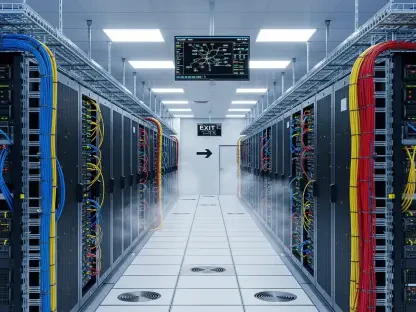In the ever-evolving landscape of cybersecurity, a recent incident involving a supply chain breach in Switzerland has brought a clear focus on the potential vulnerability of governments to sophisticated cyberattacks. The breach, centered around Radix, a non-profit organization serving Swiss federal offices within the health sector, led to a major uproar when the cyber attackers leaked sensitive government data on the dark web after their ransom demands were refused. The attack, orchestrated by the Sarcoma ransomware group, has prompted an in-depth inquiry by the Swiss National Cyber Security Center (NCSC) to assess the full scope of the breach and determine which specific data and offices were affected. As cybercriminal methods become increasingly advanced, the risk to governmental and non-profit entities grows, raising critical questions about modern security structures and resilience to such threats.
Cyber Threat Landscape and Sarcoma’s Role
The Sarcoma ransomware group, identified as an emerging threat since its debut last year, has quickly demonstrated its ambition and capacity by escalating its operations with alarming speed. Known for executing double extortion strategies and targeting entities like Smart Media Group Bulgaria and Unimicron, Sarcoma has highlighted the vulnerabilities inherent in public sector organizations. These institutions are often seen as attractive targets due to outdated software systems and gaps in supply chain security. As these breaches proliferate, there is a significant trickle-down effect that can traverse entire networks, disrupting services and compromising sensitive information. This recent Swiss breach is a pertinent reminder of the importance of understanding the capabilities of ransomware groups and their evolving strategies. The attack is not isolated, but rather part of a larger, concerning trend where cyber incidents are increasingly directed at government infrastructures worldwide for financial or political gain, showcasing attackers’ adaptability and the global nature of cyber threats.
With the growing sophistication of cybercriminal tactics and the rising number of cyber incidents, reported attacks have increased considerably in recent years. A surge in incidents was noted by the NCSC, necessitating new approaches to bolster defenses against these aggressive entities. The public sector must acknowledge this rapid evolution in cybercrime and the relentless pursuit by groups such as Sarcoma to find and exploit vulnerabilities in their defense systems. Governments worldwide must prioritize strengthening security frameworks to stay one step ahead of hackers, ensuring that their responses are as dynamic and adaptable as the threats they face.
Implications of the Swiss Breach and Global Concerns
The Swiss cyberattack demonstrates how deeply interconnected entities can become weak points within broader security frameworks. Radix, though a separate non-profit, became the unwitting conduit for an attack that reverberated throughout government offices. This breach serves as a stark example of how intricacies in supply chains can be exploited, resulting in cascading impacts that might not immediately affect direct partners but can ripple through allied systems. The disclosure of government data without consent is a severe breach of public trust and necessitates revisiting security protocols associated with third-party service providers. As investigations continue, determining the full breadth of compromised departments and data will be integral, not just for managing the immediate aftermath but also for shaping future policy and response strategies to avert similar breaches.
From a global perspective, the Swiss incident encapsulates a growing phenomenon where state and non-state actors target vulnerable segments within government frameworks for coercion and disruption. This extends beyond European borders, as cybercriminals spare no effort in uncovering weaknesses in any nation’s armor. The continuous rise in cyberattacks, whether for financial extortion or geopolitical maneuvering, emphasizes a need for international cooperation and robust cybersecurity frameworks that can withstand such pressures. Ensuring such resilience requires constant adaptation and engagement with cybersecurity experts to develop agile strategies that guard against the continuously evolving threat posed by advanced ransomware groups.
Future Considerations in Securing Supply Chains
The Sarcoma ransomware group, recognized as an emerging threat since last year, has swiftly escalated its operations, reflecting both its ambition and capability. Known for deploying double extortion tactics against targets like Smart Media Group Bulgaria and Unimicron, Sarcoma underscores public sector vulnerabilities. These organizations, often reliant on outdated software and having gaps in supply chain security, are seen as prime targets. Breaches like these can cause widespread disruptions, undermining services and compromising sensitive data. A recent Swiss breach exemplifies the need to comprehend ransomware groups’ capabilities and evolving strategies. The attack isn’t isolated but is part of a troubling trend: cyber incidents increasingly target government infrastructures for financial or political motives, illustrating the adaptability of attackers and the global nature of cyber threats. As cybercriminal tactics grow more sophisticated, attack reports surge, stressing new defense strategies. Governments need to strengthen security frameworks and adapt their responses to stay ahead of these threats.









